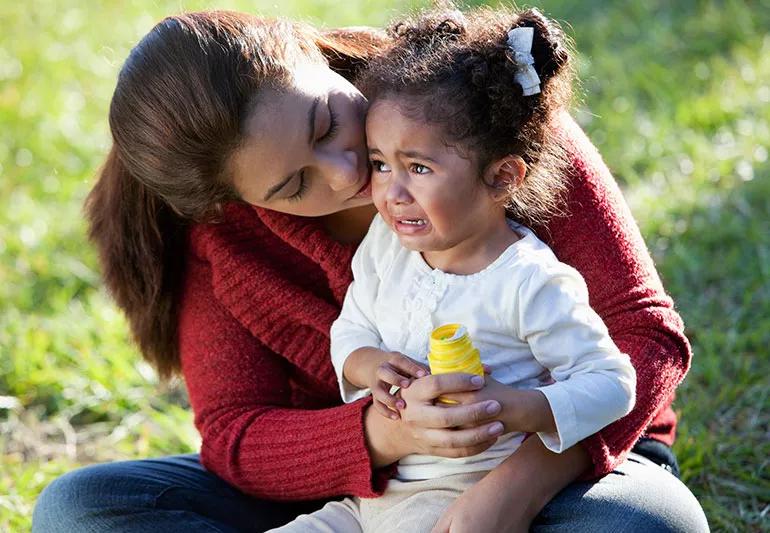Find out how to head off unruly behavior

Does this sound familiar? Your cute-as-a-button 2-year-old asks for candy in the check-out line at the grocery store. You say no. What happens next is the stuff of parent nightmares: Your child melts into a screaming, crying heap right before your eyes — capturing the interest of ALL of your fellow shoppers.
Advertisement
Cleveland Clinic is a non-profit academic medical center. Advertising on our site helps support our mission. We do not endorse non-Cleveland Clinic products or services. Policy
Ah, the “terrible twos.” While the phase won’t last forever, it sometimes can feel like it will never end. In the meantime, it’s a good idea to have some strategies for handling your toddler’s unruly behavior.
For every child who seems to skip the meltdown stage altogether, there’s another whose terrible two phase seems to last for years. “While most children fall somewhere between those extremes, it is very common for children to go through a phase of unruly behavior somewhere between the ages of 18 months and 4,” says pediatrician Mary Wong, MD.
“The toddler years are a time of rapid growth — physically, mentally and socially,” she says.
During this time, most toddlers develop their sense of self and start to want to do things independently.
“When a toddler’s desire to do something doesn’t align with their ability, frustration is often the result,” Dr. Wong says. “To further compound things, toddlers typically don’t have the language skills to ask for help if things don’t go smoothly.”
This gap between desire and ability can cause frustration, unruly behavior (like biting other children) and tantrums.
“While there is no quick fix for undesirable toddler behavior, you can take steps to help things go more smoothly when the terrible twos emerge,” Dr. Wong says.
Advertisement
When misbehavior strikes, it’s helpful to remind yourself that you aren’t alone.
Rest assured, “Your child won’t still be going through this phase when they go off to college,” Dr. Wong says.
Advertisement
Learn more about our editorial process.
Advertisement

Jaundice that’s present at birth or lasts more than a week should be evaluated by a pediatrician

There’s more than one way to potty train, but this intensive method can kickstart the process

Clean your baby’s mouth with a washcloth or small toothbrush if they have a tooth or you suspect thrush

A glass child is the sibling of someone with special needs — often seen as the easy one, but carrying invisible burdens

Babies can be noisy little sleepers! Blame small nasal passages and short sleep stages

Yes, you can have honey if you’re breastfeeding — but never feed it directly to babies under 1

Earlobe piercings heal quicker and are less painful than cartilage piercings — proper cleaning and care are important

We don’t fully understand how cleanliness impacts immune system development, but we do know that preventing illness is important

If you’re feeling short of breath, sleep can be tough — propping yourself up or sleeping on your side may help

If you fear the unknown or find yourself needing reassurance often, you may identify with this attachment style

If you’re looking to boost your gut health, it’s better to get fiber from whole foods